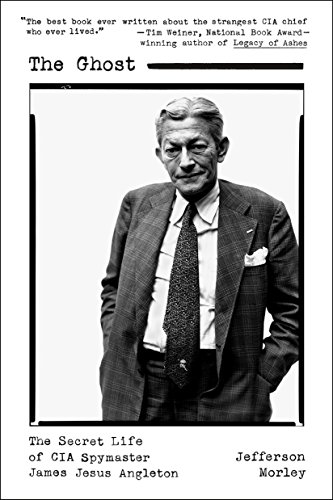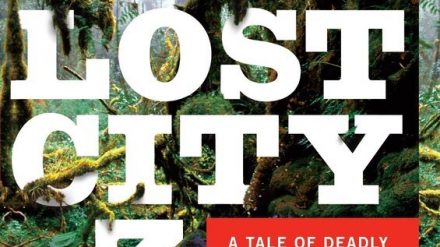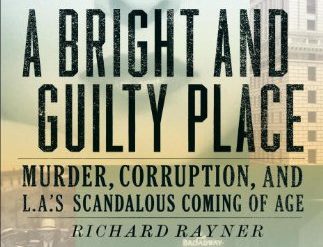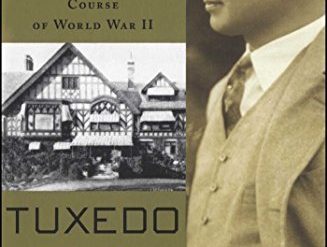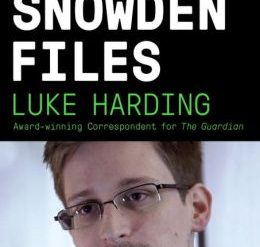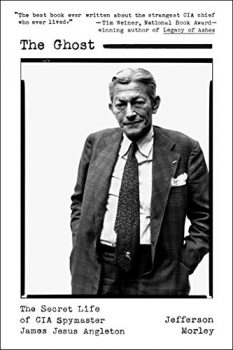
If there is anything even remotely resembling the “deep state” that Donald Trump and other Right-Wing conspiracy nuts obsess about, it certainly existed from the 1950s to the early 1970s in the heyday of the Central Intelligence Agency. Of course, Allen Dulles (1893-1969), who ran the CIA from 1953 to 1961, was a key figure in the secret government that operated with a mind of its own during that period. But so was the much less well-known chief of counterespionage at the Agency, James Jesus Angleton (1917-87). Unfortunately, for most of the half-century since Jim Angleton ran amok, much of his story has remained untold. But now it’s available for all to see in Jefferson Morley‘s revealing 2017 biography, The Ghost. The book is a deeply distressing account of how one man nearly destroyed the CIA.
Like so many of his colleagues in the early CIA, Angleton was the product of a privileged background (Yale, Harvard Law) and a stint in the OSS. In this forerunner to the CIA, he worked with several men who later rose to prominence in the Agency (Frank Wisner, Bill Colby, Dick Helms, and Allen Dulles, three of whom later rose to become its Director). In Italy in 1944-45, Angleton served as head of counter-intelligence for the whole country. He was a man of many talents, fluently speaking three languages and making his mark at Yale as the founder of a poetry magazine that attracted contributions from T. S. Eliot, Archibald MacLeish, and his anti-Semitic and fascist friend Ezra Pound.
The Ghost: The Secret Life of CIA Spymaster James Jesus Angleton by Jefferson Morley (2017) 325 pages ★★★★★
A decades-long habit of undermining US policy
Angleton’s decades-long habit of operating against the currents of American policy began early. In the final months of World War II, when he was not yet thirty, he assisted Allen Dulles in facilitating unauthorized peace negotiations with a leading German general in defiance of Franklin Roosevelt’s (and the Allies’s) express policy of unconditional surrender. And he arranged for one of Italy’s most prominent Fascists to evade prosecution as a war criminal, thus allowing him to continue to lead Right-Wing forces in his country throughout the post-war period. Angleton also helped prominent Nazis to cover their tracks.
Kim Philby’s defection triggered Angleton’s paranoia
If his work in the OSS was the pivotal event in Angleton’s early life, the fulcrum of his personality shifted radically less than two decades later when in 1963 his close friend and mentor Kim Philby (1912-88) defected to Moscow. Angleton appears to have descended into paranoia that caused him to suspect the hand of the KGB everywhere he looked. For fourteen years he spearheaded a “mole hunt” that forced innocent CIA officers into premature retirement and diverted the Agency’s resources into a series of pointless and often destructive investigations that ended only with his death.
How one man nearly destroyed the CIA
Another of the consequences of Angleton’s paranoia was that he accepted the claims of a Soviet “defector” named Anatoly Golitsin who famously insisted that British Prime Minister Harold Wilson was a KGB agent. That myth caused untold harm to the “special relation” between the US and Great Britain. Golitsyn was undoubtedly either a conspiracy theorist or a KGB plant (or both), but his increasingly wild assertions guided Angleton’s performance at the CIA for years to come. Only one of the consequences of his insistence on Golitsyn’s bona fides was that a genuine high-level KGB defector was imprisoned for a lengthy period and his revelations discounted. In short, James Jesus Angleton came close to destroying the CIA. Yet that may not be the worst of Angleton’s impact on American society.
He legitimized mass surveillance of Americans
“Angleton’s most significant and enduring legacy was to legitimize mass surveillance of Americans,” Morley writes. “While his mole hunt paralyzed CIA Soviet operations for five years at the most, Angleton’s [domestic surveillance] program funneled secret reporting on law-abiding citizens to [J. Edgar] Hoover‘s COINTELPRO operatives for eighteen years. The FBI used CIA information to harass leftists, liberals, and civil rights leaders [including the Rev. Martin Luther King, Jr.] from 1956 to 1974. Angleton was the ghost of COINTELPRO.”
Did Jim Angleton engineer JFK’s assassination?
In The Ghost, Morley broadly hints that Jim Angleton may have played a leading role in the assassination of President John F. Kennedy. He cites a considerable body of evidence that Angleton suppressed for more than a decade his years-long familiarity with Lee Harvey Oswald’s work. In fact, Morley implies that Oswald may well have been a CIA asset. And, combined with the overwhelming evidence that the fatal shot in the assassination came from the “grassy knoll” and not from Oswald, it becomes highly likely that a conspiracy was involved in the killing. And who could best engineer such a conspiracy other than the CIA’s master of conspiratorial thinking, James Jesus Angleton?
Angleton controlled the CIA file on Lee Harvey Oswald
If you’re skeptical, consider what Morley reports in The Ghost: “The CIA’s handling of information about Lee Harvey Oswald, the accused assassin of President John F. Kennedy, is a story shrouded in deception and perjury, theories and disinformation, lies and legends. But at least one aspect of the story cannot be disputed: Angleton controlled the CIA’s file on Oswald for four years — from his defection in October 1959 until his death in November 1963.”
Morley continues: “[Allen] Dulles wanted to steer the [Warren] commission‘s investigation away from the CIA, and Angleton was obliging. A conspiracy theorist would say Angleton masterminded the JFK coverup. A prosecutor would say he obstructed justice. A bureaucrat would say he covered his ass. In every practical sense, his actions were invisible. In the tragedy of Dallas, Angleton played a ghost.”
Or was Fidel Castro the mastermind?
However, despite the implications of Angleton’s involvement in the assassination, Morley also cites the possibility that Fidel Castro was responsible. “If Castro knew about the [CIA plot to murder him], then he had a motive for killing Kennedy — self-defense — possibly corroborated by Oswald’s Cuban contact [a fact known to Angleton but long suppressed]. Angleton chose not to investigate, tantamount to obstruction of justice.”
The CIA’s greatest failure since Pearl Harbor
On balance, Morley makes clear that he is not convinced Angleton engineered the assassination. “No matter who fired the fatal shots in Dallas,” he writes, “Angleton has failed disastrously as counterintelligence chief. He could have — and should have — lost his job after November 22. Had the public, the Congress, and the Warren Commission known of his preassassination interest in Oswald or his postassassination cover-up, he surely would have.”
For related reading
Awhile ago I reviewed a biography of Kim Philby, who looms large in Angleton’s story. The book is A Spy Among Friends: Kim Philby and the Great Betrayal by Ben MacIntyre. It’s reviewed at Was Kim Philby the greatest spy ever?
For a fictional depiction of James Jesus Angleton, see The Soul of Viktor Tronko by David Quammen (Digging down deep to find the mole in the CIA).
I’ve also reviewed a troubling book about the assassination of John F. Kennedy: Mary’s Mosaic: The CIA Conspiracy to Murder John F. Kennedy, Mary Pinchot Meyer, and Their Vision for World Peace by Peter Janney. My review is at Why did JFK die? The most convincing explanation I’ve ever read. Morley mentions the author in The Ghost, citing the man’s father as a senior CIA officer.
You might also enjoy my posts:
- 30 good nonfiction books about espionage
- 10 great biographies
- The 10 top espionage novels
- Top 20 popular books for understanding American history
- 10 top nonfiction books about World War II
And you can always find my most popular reviews, and the most recent ones, on the Home Page.

